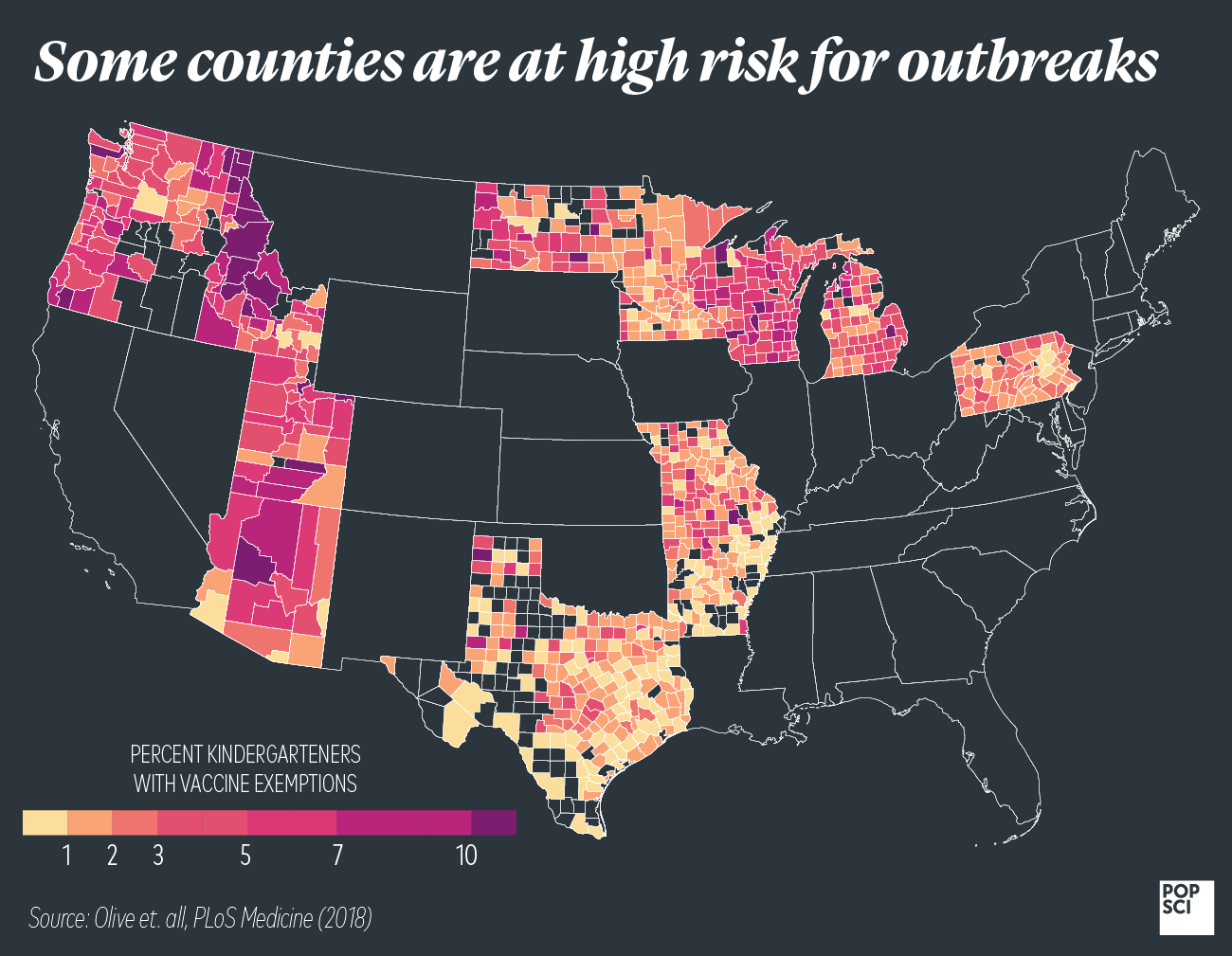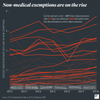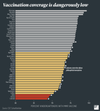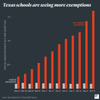Why measles is back, in five charts
Both coasts are currently battling measles outbreaks.


Too many people have forgotten what it’s like to live in a time where everyone got the measles. The vaccine was invented in 1963, and by 1968 cases in the U.S. had already dropped. By the ’70s it was downright rare to get measles as a child, when just a decade or so earlier it had been uncommon not to get it. By 2000, the U.S. declared the disease eliminated—rare cases always came from outside the country. But 2019 has begun with some of the worst outbreaks we’ve seen in recent years, and it’s crystal clear to researchers why the measles is coming back: we got lax about vaccines.
Thanks in part to a famous, fraudulent study claiming to link the MMR vaccine (that’s for measles, mumps, and rubella) to autism, parents across the country have been dissuaded from fully vaccinating their children. The measles virus infects nearly everyone it comes in contact with, so our main protection from it comes from herd immunity—you need upwards of 95 percent of a population to be vaccinated against it to avoid harboring pockets of the virus.
But in recent years, thanks to state laws that allow parents religious and/or philosophical belief exemptions, those rates have been dropping. It’s only by a few percentage points, but remember: we need to stay above 95 percent. The same thing is happening in Europe, where several countries have dipped below that mark or even lower, into the high 80’s. Even a few percentage points can make a difference—Europe saw one of its worst years for measles cases on record, with tens of thousands falling ill from a completely preventable disease.
Some schools in Washington state are now going so far as to actively prevent unvaccinated kids from attending classes in an effort to get the outbreak under control. Here’s how we got to this point:

All states allow medical exemptions from vaccines because some people simply cannot get them. Immunocompromised children, for instance, wouldn’t be able to handle the shot. Some states also allow parents to intervene based on religious beliefs, on the grounds that some sects would feel it was a violation of their beliefs to be forced to get the shot. That being said, according to the Vanderbilt University Medical Center there are only a handful of religions that have objections to vaccines: Christian Scientists, the Dutch Reformed Church (though not the modern American branch of that denomination, also known as the Reformed Church in America), and some faith healing denominations like Faith Tabernacle. However, many states also allow you to refuse vaccination by stating a personal objection.
You can see in the chart below how many of the states with both kinds of exemptions are experiencing a rise in the number of people seeking them. And unsurprisingly, a 2018 study in the journal PLoS Medicine found a correlation between those states and states with measles outbreaks.

Many of the states with vaccination rates below 95 percent also happen to be states with more lax laws, though a few of them are still hanging on above the threshold. But the real problem is the pockets of low vaccination rates. Washington, for instance, still has a 90+ percent statewide rate, yet is experiencing an outbreak severe enough for the governor to call a state of emergency. That’s because statewide data doesn’t really give you the full picture. For that, you have to look at individual counties and schools.

These states are among the 18 total that allow philosophical exemptions (data wasn’t available at the county level for all of them). The map shows how some areas can have perfectly acceptable exemption rates while others, sometimes even one county over, have rates exceeding five percent. Idaho is home to many of the counties with the highest rates—at the top one, Camas County, a staggering 26.7 percent of kindergarteners haven’t gotten their measles vaccine.

And even within states like Texas that still have fairly high overall rates, there are more and more parents seeking non-medical exemptions every school year. Though the line looks fairly flat in comparison to states with overall higher exemption rates like Arizona and Idaho, if we zoom in we can see that the trend is moving steadily upwards.

Again, we’re only talking about one or two percentage points here for many of these states, but sometimes that’s all it takes. If one school slips too far under on its own, even as county or statewide numbers hold high, it’s possible to have an outbreak within that pocket of children. And that leaves neighboring counties more vulnerable.
Measles is a completely preventable disease—we have all the tools we need to keep it from coming back. We just have to use them.
Note: This article has been updated to clarify which Dutch Reformed Church (“of America” or of the Netherlands) is actually against vaccines.